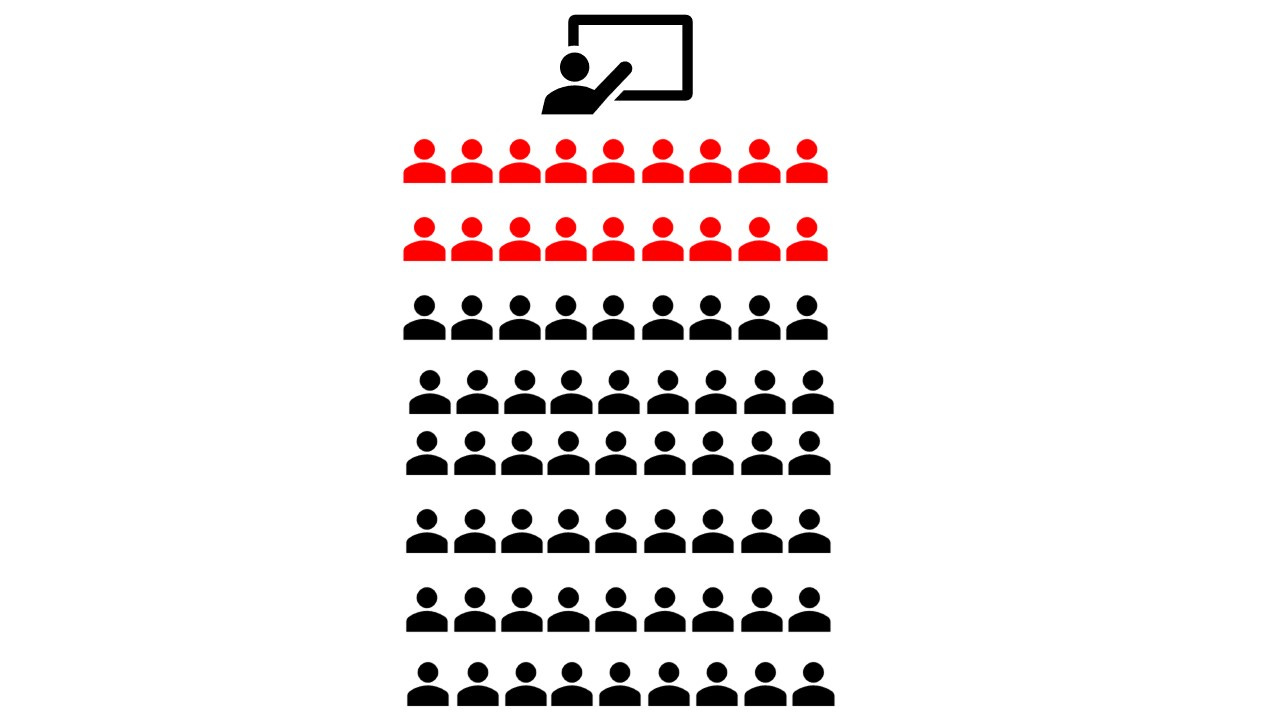Tip: Put students in the hot seat
Participation can be hard to encourage and reward in large classes. "Hot seats" simplify participation for instructors and students.
Student engagement, particularly in larger classes, is always a challenge. While previously I shared strategies for making lecture-based classes more engaging and some ideas for online discussions, today’s strategy focuses on large classes with more limited small-group or active learning opportunities.
Hot Seats
This is a strategy for increasing participation and making tracking participation easier for the instructor. This is not the same as the hot seat strategy seen in K12 classrooms (it seems to be particularly popular with social students and English teachers) where one student is peppered with questions from classmates.
In a large class, designate the front row or two as hot seats. At each class meeting, students have the choice of sitting in one of the hot seats, with new students in the hot seats each class meeting. During discussions or anytime the instructor wants to elicit responses from the class, the questions are directed at students in hot seats. Responses from the students in the hot seats are rewarded or recorded in some way – perhaps with a checkmark on the roster, with a medium-tech participation tracking system (a spreadsheet), a higher-tech system (an app like TopHat, iDoceo, or even ClassDojo). Students outside of the hot seats can volunteer answers and earn points, too.
Adaptations
Rotate hot seats by last name so students have equal opportunities to be in the hot seat over the semester, rather than relying on volunteers each week.
Require that students either reach a certain number of sessions in the hot seats, or a certain participation score, by the end of semester
Using hot seats effectively requires that you have thoughtful and thought-provoking questions at the ready: here are some strategies for being a better question-asker.
Other large-class strategies
Create small learning groups. Large classes can make students feel lost and anonymous. Promote a sense of belonging by organizing students into small learning groups. Groups can work together on a problem or discussion for a single session or a longer project.
Low-stakes assessment. At the risk of sounding like a broken record, early, frequent low-stakes assessments can help instructors and students identify how well students are learning. Quizzes with multiple opportunities
Use names & pronounce them correctly. Use the photo roster or a seating chart to learn students’ names, or as an aide-memoire during class. Another strategy I use frequently is asking students to create name tents to sit on top of their desks, so that if I can’t remember everyone’s name, I can use the tents to be able to call on students by name.
Think-Pair-Share. Provide students with opportunities to reflect on their own and then share thoughts with someone sitting next to them before asking for a response in front of the class.
Have students do + discuss. Ask students to do something during a discussion - here is where I like using collaborative docs - like taking notes, adding to a list or mind map, or annotating a shared diagram or reading.
How do you encourage participation in larger classes?
For more reading:
Discussion strategies (Center for Teaching and Learning, Washington University)
Large Classes: A Teaching Guide (University of Maryland)
Resources for Interactive Lecturing (Carleton College)





